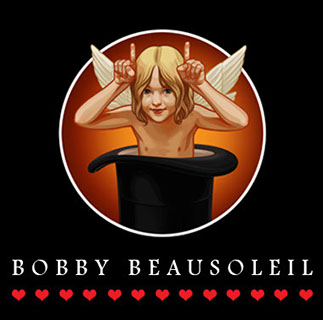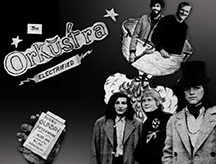
The Orkustra: Notes from
the Psychedelic Underground
Bobby BeauSoleil
 San Francisco, 1966. Narrow Victorian façade houses, gaunt and quaint, squeezed together side-by-side like musty books in the library of a lunatic. The roller-coaster streets arranged with about as much apparent forethought as a casual toss in a child’s game of pixie sticks, each hilltop offering up its own unique vista, each vale a haunt of subtle intrigue. Elegant old theaters, dilapidated warehouses, eateries and clubs and coffee houses, places of commerce, places of worship, houses of the holy and the unholy, all gracefully suffering the same kind of slow decay that time and salty sea mists inflict on coastal communities. The noise, the din, an ever-present song: machines and voices, music from windows and doorways, in clubs and concert halls; wavelets lapping at the piers on a wharf, the deep bellow of distant fog horns. Twinkling spires supporting colossal bridges spanning the placid waterways, countless city lights sparkling their reflections on the bay like diamonds, like the stars of galaxies. The fairyland gardens of Golden Gate Park, a living testimonial to the vision and determination of one man, and the wisdom of city fathers who allowed him a free hand to create them out of the wasteland. Cops walking their beat on Haight Street, dressed for another era in dark blue double-breasted coats adorned with rows of shiny brass buttons. Unruly traffic on a confusing disarray of highways and byways; the buzzing hustle of an electric streetcar, the more stately bustle of a clanking trolley. And the people—young and old, rich and poor, sane and senseless, revered and misunderstood, fastidious and unwashed, drunk and sober, stoic and passionate, godless and born again—of every kind and color; a port city’s rich and pungent brew of diverse cultures.
San Francisco, 1966. Narrow Victorian façade houses, gaunt and quaint, squeezed together side-by-side like musty books in the library of a lunatic. The roller-coaster streets arranged with about as much apparent forethought as a casual toss in a child’s game of pixie sticks, each hilltop offering up its own unique vista, each vale a haunt of subtle intrigue. Elegant old theaters, dilapidated warehouses, eateries and clubs and coffee houses, places of commerce, places of worship, houses of the holy and the unholy, all gracefully suffering the same kind of slow decay that time and salty sea mists inflict on coastal communities. The noise, the din, an ever-present song: machines and voices, music from windows and doorways, in clubs and concert halls; wavelets lapping at the piers on a wharf, the deep bellow of distant fog horns. Twinkling spires supporting colossal bridges spanning the placid waterways, countless city lights sparkling their reflections on the bay like diamonds, like the stars of galaxies. The fairyland gardens of Golden Gate Park, a living testimonial to the vision and determination of one man, and the wisdom of city fathers who allowed him a free hand to create them out of the wasteland. Cops walking their beat on Haight Street, dressed for another era in dark blue double-breasted coats adorned with rows of shiny brass buttons. Unruly traffic on a confusing disarray of highways and byways; the buzzing hustle of an electric streetcar, the more stately bustle of a clanking trolley. And the people—young and old, rich and poor, sane and senseless, revered and misunderstood, fastidious and unwashed, drunk and sober, stoic and passionate, godless and born again—of every kind and color; a port city’s rich and pungent brew of diverse cultures.
To one who until just a few months earlier had been in the choking grip of the glitz and stucco squalor of the greater Los Angeles area, being absorbed by the rollicking energy and rich ambiance of San Francisco was like being dipped in mother’s milk. It seemed an enchanted place to me. To this day it remains the only city I have ever truly loved.
What has this to do with The Orkustra? Quite simply, everything. Only in that brief and unique period in San Francisco’s history could a band like The Orkustra have been brought into being, for it was as much an expression of the times and the environment as it was an expression of the collective imaginations of the band’s members.
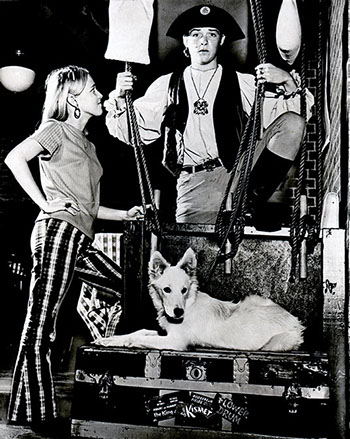
My arrival in the San Francisco bay area preceded by a couple of months the otherwise uneventful passage of my eighteenth birthday in the fall of 1965. A young vagabond in colorfully mismatched clothing, less than ten dollars in my pocket, I wandered the area aimlessly at first, all of my hopes for the future resting on my ability to play a few chords and riffs on the Epiphone electric guitar I was packing. Accompanying me was Snofox, a mid-sized white dog of uncertain genealogy, my ever-faithful friend and traveling companion.
We stopped for a couple of weeks in Sausalito, and it was nice, but too exclusive and removed from the action. Berkeley was a busy hub of activity, but too collegiate for my tastes, and North Beach reminded me a bit too much of the blinking neon-infested Hollywood Boulevard I had left behind. By a series of happy accidents, we soon found ourselves in San Francisco’s Haight-Ashbury district, and it was just right.
At that time, the Haight was a relatively quiet low-rent community, charmingly seedy and run down, very nearly a ghetto in places. Bordered on two sides by Golden Gate Park, and with its affordable rentals, the area tended to attract aspiring artists and musicians, and their respective camp followers. This was the Haight-Ashbury district as I found it. In altogether too short a time it would undergo a drastic transformation. The Haight Street Merchants Association was already conspiring to make the Haight a thriving—and hence profitable—center of counter-culture activity, and young people were beginning to drift into the area in ones and two, much as I had. A year-and-a-half later the trickle would become a flood greater than the most imaginative of the Haight Street Merchants could have anticipated, a flood that would quickly swamp the little community. During that brief span of time between, however, it would give rise to a creative outburst that would leave an indelible imprint on the consciousness of the western world.
Having found a suitable base of operations, the next order of business was to find a rock band I could join in with. Locating one turned out to be a snap. Within less than a week of arriving in the Haight, I learned of an up-and-coming band called The Outfit who practiced in the local area. I learned also that they had recently fired their first lead guitarist, and were in the market for a replacement. While this was certainly welcome tidings, I was not so certain that my qualifications would measure up. Having previously played as a rhythm guitarist in a couple of L.A. rock groups, I was not entirely without real band experience, but I had yet to cross the threshold from playing rhythm to playing lead. The noodling and riffing I had been doing in private was unproven in the context of a band, and I was reluctant to bill myself as a lead player. Nevertheless, figuring that the most I had to lose was a bit of my dignity, I forged ahead in a leap of faith, determined to do my best to land a position in the band.
The Outfit practiced in an old movie theater on Haight Street. The sign above the marquee proclaimed it to be the Haight Theater, but it was already becoming known on the street as the Straight Theater. In the hip-speak of the times, the term “getting straight” was synonymous with “getting high,” and so, to anyone in the know, the new name was a declaration that the former movie theater had fallen under the dominion of psychedelia. It had recently been purchased by a loose confederacy comprising the Resner brothers, Bill and Hillel, and a few of their friends, who intended to convert the run-down Art Deco style theater into a sort of counter-culture party palace. The work required to bring about the transformation had not yet begun in earnest the day I approached the front doors of the Straight Theater for the first time. Hearing music inside, and finding the doors unlocked, I went inside and introduced myself to the band.
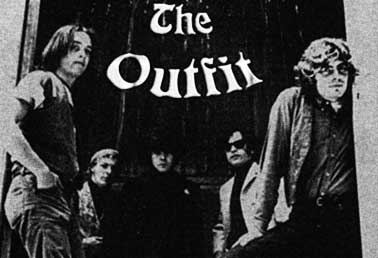
Despite my limited experience as a lead guitarist, the audition went well. The members of The Outfit liked the way I was able to compliment the sound of their repertoire of original songs with my impromptu riffing, and I was unanimously voted into the group. During the almost daily rehearsals that followed, I discovered that I had a knack for spontaneous melodic improvisation. Ironically, this discovery would give rise to a discontent with the formula rock band model that would, in part, lead to my decision to quit The Outfit only a few months later.
I enjoyed playing with The Outfit for those few months. They were a fun bunch of guys, and there was some real talent within the group. But there were problems in the marketing strategy. The band’s management was stuck in a Hullabaloo mindset, and simply did not get it that The Outfit was never going to be like a stateside version of The Dave Clark Five. A misbegotten strategy of shopping the band to the bubble gum crowd had us playing high school events and gigs at out-of-the-way nightclubs like The Piano Bar, where the clientele guzzled beer and sipped mixed drinks, and smiled vacuously at the motley looking group on the bandstand, occasionally calling out the names of Top-40 songs that The Outfit could have played only as a mockery. Oddly, the other members of the band did not seem able to apprehend the nature of the problem and were apparently willing to go blithely along with the management’s plan. I could not have said at the time why I felt such a growing sense of dissatisfaction, but I knew fairly early on that playing in The Outfit would only be a brief stopover on my way to more interesting musical adventures.
What I learned in those few months laid the groundwork for much that followed, including the initial concept that gave rise to the formation of The Orkustra. Out of the experience came the valuable discovery that I possessed an innate ability to improvise linear melody and counterpoint, and the time spent playing with The Outfit gave me an opportunity to hone those skills to a limited extent. Moreover, by exemplifying the kind of formula rock band methodology that triggered the discontent I felt as a member of The Outfit, the experience helped me to be able to discern some of the pitfalls to be avoided. Subtracting what I disliked from the whole and examining what was left, I could begin the process of beating out a pathway that would, hopefully, lead to my greater fulfillment as an artist.
Even as I continued to practice and perform with The Outfit, I was hatching plans to strike out on my own. The gigs we played put enough money in my pocket to buy guitar strings as needed, pay rent on a room in a communal flat in the Haight, keep boots on my feet and food in my stomach, and provide Snofox with a can of dog food each day. Freed more or less from the mundane concerns of everyday survival, I had time in abundance to develop the essential design for the music ensemble I intended to put together.
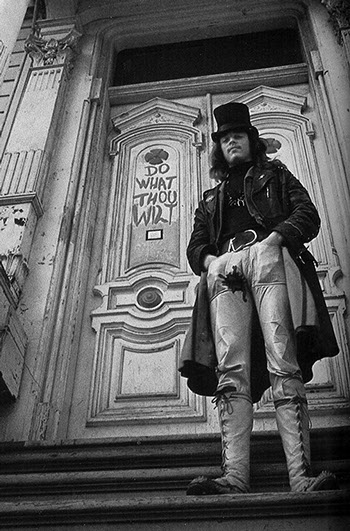
The grand city of San Francisco laid itself out before me like a King’s banquet, and we, Snofox and I, spent much of our time exploring its endless nooks and crannies. One day, I chanced upon a huge music store on Market Street that had a basement level most of its regular customers didn’t know about. On the street-level floor there was the usual assortment of guitars, drums, amplifiers, organs and pianos, accordions, banjos, ukuleles, and a selection of high school band instruments. Down below, however, there were row upon row of floor-to-ceiling shelves filled with musical instruments and accessories of every conceivable kind, including numerous exotic instruments from around the world. The elderly proprietors didn’t seem to mind that I frequently spent hours down there in that dusty labyrinth, looking around and fiddling with the curiosities I found. They checked in on me from time to time, and patiently answered my questions, telling me the names of instruments I had not encountered before. On one of my visits to the store I took a particular liking to a beautiful stringed instrument from Greece called a bouzouki, and I traded a Gibson acoustic guitar for it and a pickup that would let me play it through an amp.
Meanwhile, my listening habits became increasingly eclectic as my interests diversified. I was most attracted, naturally, to what my contemporaries were doing in the rock music scene. I often went to concerts at the Avalon Ballroom, Fillmore Auditorium, The Matrix, The Annex, and other rock music venues, to check out Big Brother, The Dead, The Airplane, Moby Grape, The Charlatans, Quicksilver, and other bay area bands. And of course, I attended concerts to hear performances by visiting bands from L.A.—my old familiar friends, literally and figuratively—as well as those from other parts of the country and abroad. Though I had resolved that I would not follow in their footsteps, I loved the sounds they made.
By then I was conscientiously expanding my musical horizons by scouring the record collections of friends for fresh inspiration. For the first time, I listened with my full attention to recorded performances of symphonies by Beethoven, Mozart, Vivaldi, and Wagner, marveling at the complexity, the rich colors and textures, and the incredible emotive power of orchestral dynamics. The blues—Delta blues, Chicago blues, rhythm and blues—rocked my soul. The subtlety and nuance of inflection in songs by John Lee Hooker, Jimmy Reed, Otis Redding, Charlie Musselwhite, Howlin’ Wolf, Paul Butterfield, Screamin’ Jay Hawkins, B.B. King, among others, taught me how great gooey gobs of emotion could be squeezed into just a few notes. Listening to recordings by Ravi Shankar, Ali Akbar Khan, John Coltrane, Ornette Coleman, and to some of the free jazz musicians I heard live as I sat in the dark recesses of the Haight Levels jazz club late at night, I got an inkling of how to interpret the language of music played spontaneously from the heart and soul, in the moment; music evocative of deep passion and spirituality. Add a generous dollop of imagination, a scoop of determination, and a pinch of too-young-to-know-better, and stir briskly.
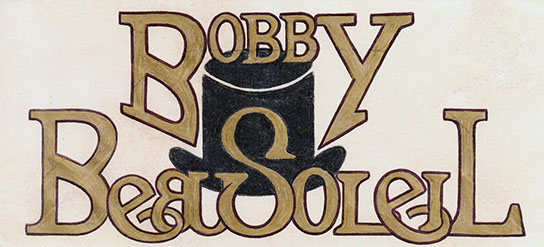
On one of my jaunts downtown, I spied a felt top hat in the window of a theatrical supply shop. I couldn’t afford to spend sixteen bucks on a hat, but it fit like it had been made for me, and I couldn’t resist the temptation to buy it. There was something about that hat. No sooner did I put it on my head than all of the crazy notions about putting together a new kind of band that had been bouncing around in there began to coalesce and assume the semblance of an idea. On an evening shortly afterward, I sat on a rock at the edge of a pond in Golden Gate Park, smoking a joint, with faithful Snofox on point for any sneaky cops that might be lurking nearby. I remember the moment clearly when, like being struck by a thunderbolt, a vision came to me full blown: I saw myself assembling the world’s first electric symphony orchestra.
Just like that it had hit me. Suddenly I had a direction and a purpose, and I wasted no time putting plan to action. That the idea this plan was based on was hare bones at best seemed of little cause for concern; I was confident it would flesh out in due course.
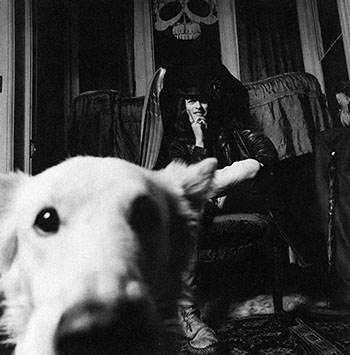
I was a man on a mission, spending every waking hour searching out resources and opportunities and advocates, and bending the ear of anyone who would listen. Many of the people I spoke with seemed to think I had taken a hard blow to the head, but even some of them were intrigued by the notion of an electric orchestra, and others were especially encouraging. Among the latter was Brent Dangerfield, the inventive and slightly deranged technician in charge of building the Straight Theater’s sound system, who offered a wealth of ideas about how various instruments might be electrically amplified and made to distort in sonically interesting ways. I picked his brain often. But for the most part I was on my own, groping my way along in dark, unchartered waters.
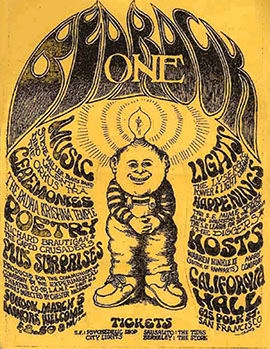
In those early days, when I considered myself fortunate if I could manage to rub two five dollar bills together, the front of the Straight Theater served as my makeshift central headquarters. This was an unplanned development; actually more of Snofox’s choosing than mine. That dog would have laid down his life for me, but he was no great fan of my music. From the time I first began practicing with The Outfit at the Straight Theater, he had taken to waiting for me outside, where the sounds made by loud electric guitars would not hurt his sensitive ears. Before long it became clear to everyone that Snofox had laid claim to the area beneath the theater’s marquee, and thought of it as his personal territory. He liked it because it gave him shelter from the elements, a good vantage to watch the action on Haight Street, and frequent opportunities to lap up the attentions of young chicks who thought he was just the cutest, sweetest doggie ever. I could always count on him to return to that spot whenever we became separated, and he counted on me to do likewise. The place where we dwelled might change frequently, but the front of the Straight Theater remained our home base for quite awhile.
If the Resner brothers were bothered by this development they never said so. Before long they began to jokingly call me “Bobby Snofox,” and I took this to mean that my dog and I had been awarded honorary membership in the informal Straight Theater family. They didn’t even seem to mind when I appropriated one of the unused “Now Playing” poster display cases underneath the marquee to use as my personal message board. The glass that had long since been broken out of the frame had yet to be replaced, and some of my friends left messages there for me on occasion. I kept a pencil on a string and paper tacked to the board for this purpose. As I began to recruit musicians to play in my electric orchestra, this message board became the primary means by which interested musicians made initial contact with me, serving in lieu of a telephone.
The process of finding musicians to join up with me for this little adventure began with handwritten notices that I prepared on 5 by 8 inch cards using pens of assorted colors to attract the attention of passersby. With these I let it be known that the “world’s first psychedelic electric symphony orchestra” was “now forming,” and that musicians of any stripe may apply, “all types of instruments welcome.” Interested musicians were advised to “see the guy in the top hat with the white dog on Haight Street,” or to leave their contact information on my message board in front of the Straight Theater. Bulletin boards were very commonplace in those days, and I posted the notices on every one of them that I could find—in the Psychedelic Shop, the Haight Levels, the Digger’s free store, several local markets, the Donut shop, and on my own message board in front of the Straight Theater—as well as in the windows of a few shops and restaurants I frequented regularly. The response was virtually instantaneous and surpassed my wildest expectations.
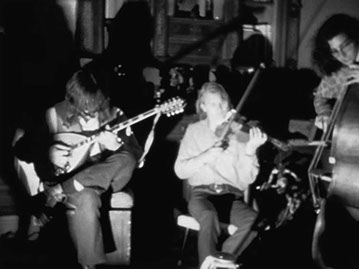
While I had been confident of success from the outset, I found myself ill prepared to handle the number of initial enquiries from musicians interested in trying out, given that I had yet to secure a location to conduct auditions and rehearse my erstwhile orchestra. Of necessity, some of the first auditions took place right on the street, or in the Panhandle section of Golden Gate Park. I had gotten a bit ahead of myself.
To my great good fortune and considerable relief, one of the first musicians to express an interest in signing on was David LaFlamme, a man in his mid-twenties who, with his pale blonde hair and mild Scandinavian features, appeared to have little of the French in his lineage. But David “the Flame” could sing and play a violin, and he was looking to join a band that had a place for his instrument and abilities. While he was clearly dubious at first, not quite sure what to make of the beardless boy and his grandiose ideas, David’s desire to apply his talents to the challenge of a unique counter-culture musical adventure overrode his initial skepticism. The psychedelic electric orchestra concept had captured his imagination much as it had mine, and we joined forces.
It is impossible to know if The Orkustra, or anything much resembling it, would have come together in that time period were it not for the dedication and resourcefulness that David contributed to the endeavor. From the beginning he brought to the equation a kind of practicality that served to counter balance my youthful impulsiveness and hyper-optimism in favor of a more pragmatic overall approach. We frustrated each other at times, the formally trained classical violinist and the self-taught rock and roll guitarist, but the formula worked.

In short order, we had rented an old tin-roofed warehouse on Page Street, just a block-and-a-half from the Straight Theater, and we immediately began conducting auditions in earnest. The auditions took the form of daily free-for-all jam sessions in the warehouse. Applicants were simply invited to sit in. It was like a kind of acid test: musicians who had the ability to improvise and who enjoyed the experience of playing in the group would find encouragement enough that they might be inclined to show up for the next session, while those who couldn’t cut it tended to drift away of their own accord. I don’t recall an instance when a musician was fired or asked to leave.
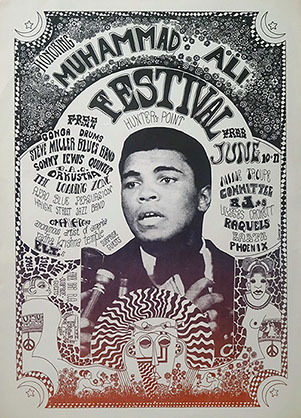
Although I made an effort to guide and nudge the collective energies toward a unified goal, I did not cast myself in the role of tyrannical bandleader, except for my insistence on a strictly instrumental approach (as opposed to instruments played in support of vocals) in which every player would have ample opportunity to express freely. Above all, the music had to be free. This was frequently translated to the group as active resistance to the temptation to fall back on traditional and hackneyed approaches to musical performance—as an ideal to aspire to, if not precisely an absolute requirement. By and large, however, the group was allowed to find its own voice and evolve its own identity.
It was not until Jaime Leopold signed on as bassist that the first hints of a recognizable group identity began to appear. Ironically, Jaime was the only member of The Orkustra who did not volunteer to try out for the group. Rather, he was as fortuitous discovery, and I had to court him like a lover before he would agree to entertain the possibility of trying out for the group.
I had met Jaime in social circumstances unrelated to the formation of the band. Visiting his apartment for the first time, I caught sight of a cheap acoustic bass leaning in a corner behind a homemade hi-fi rig. When I asked him if he played bass, Jaime shrugged and said that he played it only as a sort of hobby, that he liked to play along with jazz and blues records. To me, this was more of an asset than a liability. It suggested that he played mostly by ear, and served as a strong indication that he would be comfortable improvising. Moreover, I surmised that an unfretted acoustic bass, electrified, could potentially be a more expressive instrument than the fretted electric bass guitar most bands relied upon, and I wanted that greater degree of expressiveness in the bottom end of the fledgling orchestra’s sound. Above all, I liked Jaime as a person, and I knew on an instinctive level that he would bring good chemistry to the band.
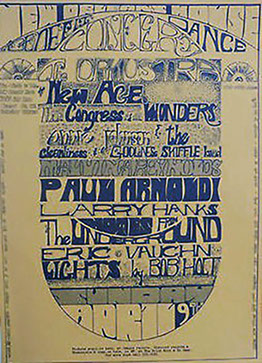
My first overtures to Jaime were politely rejected. He seemed almost embarrassed by the proposition and what it implied, claiming to have no aspirations to play in a band. But I persisted, and I persisted, and a week or two later he finally relented and agreed to bring his bass down to the warehouse and give it a shot. Once he played with us and got a taste of what it was like to jam with real live musicians, he was bitten. He made every session thereafter.
Jaime may have been a closet bass player to begin with, but he never had a rival for his position in The Orkustra. What he brought to the venture was a good deal more than an astute and passionate innate musical sensibility. To everyone in the group he was like a sort of benevolent virus, infecting us all with his intelligent wit, his wildly inventive sense of humor, and his generous nature. Seemingly with little effort, he somehow managed to make all of the oddly shaped pieces fit together in a fragile alliance, offering encouragement, mitigating arguments, and helping to keep things lighthearted and fun. This made him the most valuable member of the band, because it is what sustained us long enough to enjoy our brief day in the sun, and to create something remarkably unique along the way.
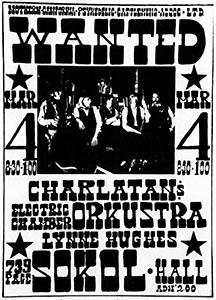
At times there were as many as a dozen musicians playing together in the warehouse at once, all trying with varying degrees of success to fit in with one another and generate some semblance of harmony. Often what resulted was the most gawdawful noise. But every once in awhile the sounds that emerged took on a transcendent quality, a kernel of promise that kept some of us coming back day after day.
The single biggest problem we faced was finding musicians who were capable of improvising in a group context. Most of the musicians who tried out could not play without a road map right I front of them. My insistence on there being a minimum of the preordained in the music we played earned me the consternation of some, and even a few accusations of being a lazy musician for not troubling myself with the fine points of the decorated staff, to which I would retort that it’s hard work to play in the moment, with sensitivity and intuition. It was all academic anyway—I did not read music in any case, and those who decided to play in the band simply had to accept that. Or not. Some chose the latter and moved on.
The instrumentation changed from day to day as musicians came and went. A cellist who was in the lineup one day might not have shown up the next, and a flute player might appear in her place, only to be replaced by a guy with a Hammond organ the following day. A diverse array of instruments and instrumentalists passed through the band in this fashion.
One day, for example, a station wagon with a trailer in tow pulled though the gate leading to the entry of the warehouse, and stopped in the driveway. Out of the car spilled a man, his wife, and five or six kids, the woman moving more slowly and laboriously than the others. The man, after verifying that auditions for an orchestra were indeed being conducted at that location, went behind the car to unload the trailer. From beneath a protective padded cloth covering emerged the most beautiful harp I have seen to this day. It was huge, made of dark woods and ornately tooled golden metal. The woman, who with her considerable girth and her long blonde hair appeared to have stepped directly out of a Wagnerian opera, was a harpist of awesome skill. She entertained us that day, performing a variety of classical pieces she knew by heart, but sadly, she was incapable of improvising with us and did not return the next. And so it went.
Of the many woodwinds players who passed through the portals of the warehouse, only one, Henry Rasof, distinguished himself as being entirely right for The Orkustra. Henry, who seemed shy and reserved at first meeting, played his oboe with a finesse and inventiveness that belied his quiet manner. He was classically trained, introspective and self-critical of his playing; yet he had the courage to stretch out and take chances and try new things. It was fascinating to watch him painstakingly make his own reeds—I had never met a musician quite so fastidious about his instrument. This kind of attention to detail is indicative of a quality Henry possessed that inspired us all to want to become better musicians.
The oboe’s distinctive tones and the liquid gypsy scales Henry played on it contributed more to giving The Orkustra a unique signature sound than any of the other instruments within the group. It lent to our sound the power to enchant, a quality that one of our fans aptly called “snake charmer music.” When Henry was in the mood, he could weave a spell with that black stick of his.
Dedicated musicianship and the ability and willingness to be inventive was not the only price of admission. Months of auditions and rehearsals were required to make the band ready to begin gigging, and, in the meantime, we all had to eat. Each aspiring member of the group was expected to invest their energy for hours of each day toward developing a unique sound and style of music against the vague promise of an eventual payoff. I lived on handouts much of the time in those days. Then, too, there was the drafty old warehouse we used as a practice studio, which presented its own set of challenges. It was uninsulated and unheated, with a bare concrete floor that would send the chill right up through shoes and feet, all the way to the bones of one’s fingers. To ward off some of the cold and damp, we hung several lengths of musty discarded carpet padding over ropes that we suspended between the posts that supported the corrugated tin roof to partially enclose an area within the warehouse, and coaxed into service an old kerosene-burning heater that David found in a junk shop to bring some warmth to the space. We spent many an hour hunkered around that stinking heater, playing our asses off in as much an effort to keep warm as to make some good music.
These assorted challenges effectively weeded out all the half-steppers. Others might have argued that those of us who stuck it out had simply lost our minds, but I believe that the few who saw it through to the end were so captivated by the moments of brilliance that occasionally occurred when we played that the hardships involved seemed comparatively inconsequential. Art always makes such demands of artists. We took them in stride.
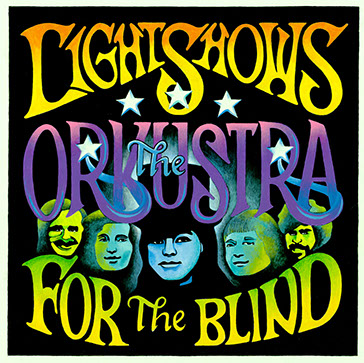
The moment when the magic combination finally clicked into place happened somewhere in the midst of the first jam we ever played with Terry Wilson, who immediately afterward came on board as our drummer. Not one of the several drummers we had tried out previously could hold a candle to Terry. Short in physical stature, with curly reddish brown hair, an aquiline profile, and an infectious laugh, Terry was a drummer who came from a jazz tradition, and that made all the difference. Improvisation came naturally to him, and he played with an inventiveness that was nothing short of astonishing. Like any really good jazz drummer, he was always in sync with the bass, always knew just when to accent, when to drive the melody, and his timing was impeccable. And yet, he was more than willing to step outside the traditions of his jazz background to co-invent with the rest of us a style of music that only occasionally flirted with jazz.
When The Orkustra began to play concert gigs, rock drummers from other bands would stand in the wings, jaws agape, watching Terry play. “Where did you learn those rhythms?!,” they would ask him later, and Terry would just smile.
As a group identity emerged, it became evident that the band would bear little resemblance to my original brainchild. A group comprising only five musicians hardly constitutes an orchestra, electric or otherwise, but as we explored and experimented with the concept we discovered fairly early on that realizing a comprehensible form of improvisational music was much more easily achievable with fewer players. It seemed to become exponentially more difficult to play as a cohesive unit with each added musician. There was also an economics consideration. Fewer band members meant that gig money would not have to be split as many ways. But more than any other reason, we chose to keep the membership small because we liked the way we sounded with just the five of us. It was simply what worked. We talked about adding more players—a cellist, perhaps, and a flute player, maybe even a horn section eventually—but we did not remain together long enough to take it to that next level.
Because our ensemble was smaller than originally envisioned, we decided to call ourselves The Electric Chamber Orchestra, as a way of signifying that we were a small group with orchestral designs. We didn’t keep this name much beyond our first gig, however. Our first public performance was at a coffee house on lower Haight called The Coffee Gallery, where we baffled and confounded the folk music crowd for weeks as we worked on polishing our performances and sorted out the bugs in our amplification system in front of a live audience, picking up some converts along the way. Not wanting to limit ourselves to playing similarly small “chamber” venues, we modified our name to make it more ambiguously representative. Henceforth we were always known as, simply, The Orkustra.
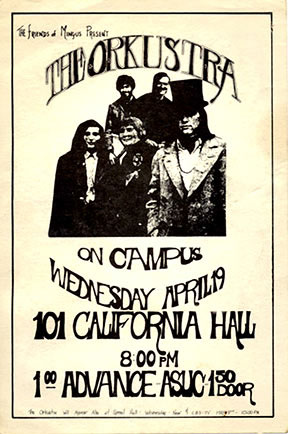
A key element in what was conceived as an electric orchestra was, of course, electricity. Achieving what I initially set out to accomplish in this area turned out to be extremely elusive. Originally I had imagined that the sound made by a single instrument could be electrically “multiplied” to sound like several instruments of the same type playing in unison. In my brainstorming sessions with Brent, it had seemed entirely feasible that electrical circuits could be used to imperfectly duplicate the sound of one instrument several times, slightly delay each iteration of the imperfectly reproduced sound relative to the others, and then combine them to make a composite sound. Using such a technique in live performance, a single violinist, for example, might be able to generate the sound of a violin section. Applying the same process to additional instruments, a small group of musicians could sound like an orchestra. That was the theory, anyhow. Nowadays, electronic devices capable of doing that trick and a whole lot more are commonplace and overused, but back in 1966 they were only science fiction. Another decade would pass before I would have an opportunity to put the theory into practice.
Learning that technology of the sort I imagined did not yet exist was tremendously disappointing, but by that time we had come too far to get hung up on that. We simply had to get by with what was readily available. Back then, that meant we were limited to amplifying the instruments to make them louder, and to using some distortion, some simple filtering, and a little spring reverb to alter the sounds of our instruments somewhat.
The basic necessity of figuring out how to amplify some of the acoustic instruments turned out to be more of a challenge than any of us anticipated. We had no plans to electrify the drums, and my Fender Stratocaster was already suitably equipped, but the violin, oboe, bass and bouzouki all needed to be outfitted with some method for converting their vibrations into electrical signals.
Contact microphones for a variety of stringed instruments were readily available, but they did not sound very good, and getting enough volume out of them without generating squeals and wails of uncontrolled feedback proved to be impossible. Taking our cue from the highly successful electric guitar, it seemed that what we needed were magnetic pickups—for the stringed instruments, in any case. David found a local luthier who carried magnetic pickups for mandolins, and had one installed on my bouzouki. It worked extremely well. Heartened by this success, we continued the search, and before long the violin and bass were similarly provisioned. Jaime and David were then able to crank up the volume to a level that could fill a concert hall, sans the earlier feedback problem, and their instruments sounded great. The only downside was a brief period of adjustment while they conditioned their fingers to playing on the all-steel strings required by the new pickups.
Finding an equivalent solution to the problem of amplifying Henry’s oboe proved to be impossible due to the state of transducer technology at that time. After a noble but nearly disastrous attempt to amplify the oboe with a pickup designed for flute, we finally settled on a small microphone taken from a harmonica pickup that just happened to fit nicely inside the bell of the oboe. It was not a perfect solution, but it enabled Henry to make his oboe sound bigger than any other oboe in history, without excessively altering the instrument’s unique timbre.
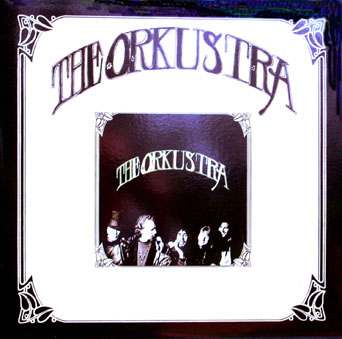 Just as we were about to begin gigging in earnest, Jaime retired his old Sears and Roebuck’s bass and invested in one far more suitable to our purposes. The new double bass made a big difference in putting the bump into the bottom end of our sound. And finally, to broaden our percussion palette somewhat, we augmented Terry’s drum kit with two large copper kettle drums. Wielding a pair of mallets with characteristic finesse and panache, Terry would, at appropriate instances, give those kettle drums a few wallops to inject some orchestral boom into our sound.
Just as we were about to begin gigging in earnest, Jaime retired his old Sears and Roebuck’s bass and invested in one far more suitable to our purposes. The new double bass made a big difference in putting the bump into the bottom end of our sound. And finally, to broaden our percussion palette somewhat, we augmented Terry’s drum kit with two large copper kettle drums. Wielding a pair of mallets with characteristic finesse and panache, Terry would, at appropriate instances, give those kettle drums a few wallops to inject some orchestral boom into our sound.
Thus provisioned, The Orkustra—a musical aberration of unprecedented pretentiousness—set out to enlighten the people of San Francisco with its own brand of rock and roll truth.
Our first significant performance, and a defining one for the band, took place on a Sunday afternoon in the Panhandle section of Golden Gate Park. It was the very first in a series of free concerts that would take place in that location, organized by the notorious Diggers. By this time, hundreds of young people had already migrated to the Haight community, and more were arriving every day. Many of them had but recently left the homes of their parents on a wing and a prayer, arriving in the Haight with little or no money, no street experience, and ill-prepared to provide themselves with the necessities of basic survival. The Diggers had declared it their mission to coordinate relief efforts, finding and providing essential food, clothing, communal housing, and medical treatment to the migrants, all free of charge. The free Sunday concerts in the park were urban guerrilla theater events staged by the Diggers, all in the spirit of fun and good times, to bring a sense of harmony and unity to the growing throngs of erstwhile hippies. In addition to live music, huge pots of savory vegetable stew were on hand for anyone who might be hungry.
The Orkustra’s association with the Diggers was initially an outgrowth of simple proximity to one another. The old warehouse on Page Street that we used for a rehearsal studio was located directly across the street from a row of derelict wooden garages that the Diggers had procured and made into their headquarters. Above the doors of the garages was a whimsical sign proclaiming them to be “The Free Frame of Reference,” the Diggers’ free store, where second-hand clothing, blankets, kitchen utensils, and sundry household items could be had for the asking. As members of The Orkustra and some of the Diggers encountered one another on a daily basis, a casual relationship was formed. Emmett Grogan, one of the Diggers’ founding members and chief instigators, took a particular shine to The Orkustra. He liked our free-form musical style and devil-may-care attitude, being so much like his own nature, and invited us to play the first of the free concerts in the Panhandle.
A makeshift stage was set up under the trees and a generator was brought in to provide electricity to power the amplifiers. As we began to play, a crowd grew quickly around us. Our performance was very well received by everyone save for the cops who showed up to inform us that the crowd exceeded the number of people who could lawfully be gathered in a public park without a permit. We were allowed to play one more song before we had to shut it down. We made it a long one. Thereafter, the Diggers made prior arrangements with city officials to obtain permits, and with a flatbed truck to serve as a stage and power source, the weekend concerts in the Panhandle became a regular feature of life in the Haight for some time. The Orkustra played that venue several times, along with The Grateful Dead, The Charlatans, Big Brother, and other San Francisco rock band luminaries of the period.
We played so many of the Diggers’ events, in fact, that we became known in some circles as The Diggers’ band. One of the most memorable of those events was the inaugural ceremonies that launched the infamous Invisible Circus festivities at Glide Memorial Church, wherein The Orkustra performed musical accompaniment for a troupe of half-naked female belly dancers who had been brought in for the expressed purpose of kick-starting the event. Our collective efforts were a rollicking success from my point of view, but the church fathers and city officials saw it from another perspective.
No doubt due to the combination of our madcap appearance and the exotic sounding music we made, we were often called upon to play the unusual venue. Among those, for example, we performed for attendees of the Bedrock concerts at the Carousel Ballroom. Organized and promoted by the Sexual Freedom League, one of the unique features of these gigs were the naked couples dancing at each end of the stage, their bodies painted head to toe in multi-color Day-Glo paints and bathed in ultraviolet light. For The Orkustra, playing gigs like these was all in a night’s work.
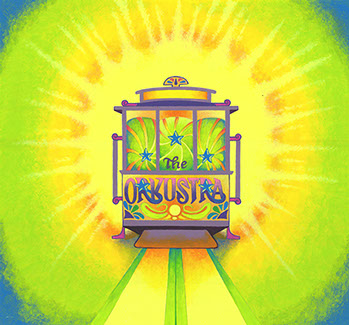
All of the bay area bands aspired to perform for the big crowds at Fillmore Auditorium and Avalon Ballroom. The Orkustra played both venues, but not as headliners—that lofty status was generally reserved for recording artists from out of town. The gigs I liked best were the nightclubs. Smaller venues are more intimate, increasing the likelihood that the energies of the audience and the performers will become commingled in a transcendent experience. In performances that are largely improvisational, it can be especially satisfying when that sort of magical interaction occurs. For this reason, I fondly remember our fairly frequent featured performances at The New Orleans House, a club in Berkeley noted for its diverse musical offerings. We once had the unique experience of playing a week at The Both/And, a prestigious San Francisco jazz club. Since we weren’t really a jazz group, we considered it an honor to have been invited to play there. Another standout was a weeklong gig at a brand new club called The Rock Garden, sharing the bill with Buffalo Springfield. The owners had put quite a lot of care and effort into making that club something special, endowing it with a great sound system, the best light show the city had to offer, and showcasing some memorable performances by top-drawer music groups.
Sadly, The Orkustra broke up right in the midst of the Summer of Love, at a time when our popularity was steadily increasing. There were probably other factors, but two events contributed most to the band’s breakup. The first was that Jaime got busted on a pot possession charge, and though he was soon out on bail and able to continue playing in the band, anxiety over the ongoing court proceedings had clouded Jaime’s ordinarily sunny disposition, which effectively dampened the band’s energy and enthusiasm. The other is that I had independently become involved in a more or less collaborative venture with underground filmmaker Kenneth Anger, a project that consumed much of my focus and somewhat alienated the other members of the band. We never officially declared the band defunct; we simply drifted in different directions as if we instinctively knew that The Orkustra’s time had come and gone. But it would not merely shrivel up like a husk to be blown away by a vagrant gust of San Francisco’s winds of change as so much of the detritus left in the wake of the Summer of Love would be. No, in its passing it would spawn some curious new variations to spring upon the American music scene.
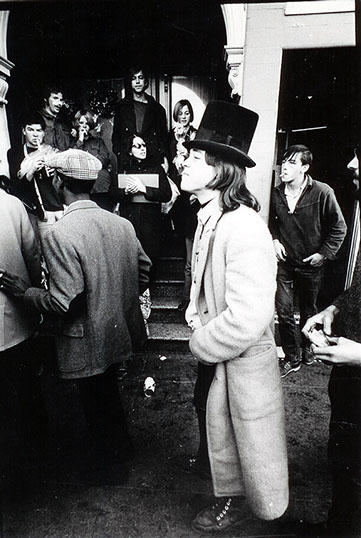
In the end, The Orkustra had become a launch pad to all of its members, each of us in some way building upon the experiences we had shared together. David—joining forces with his pianist wife, Linda—went on to form It’s a Beautiful Day, an innovative band in which he would display not only his violin playing, but a rich singing voice the rest of us had barely suspected he possessed. Terry’s personal journey took him back to playing in the jazz circuit, where he undoubtedly introduced a few fresh ideas inspired by his experiences with The Orkustra. Moving to Los Angeles, Henry resumed academic studies at the University of California, where he delved into experiments in combining word poetry with tone poetry in an early incarnation of UCLA’s electronic music lab. Late one night in 1971, I was watching The Tonight Show with casual interest when Johnny Carson introduced Dan Hicks and the Hot Licks as that night’s musical guests, causing me to sit straight up in my seat (Dan Hicks had formerly been the lead singer with The Charlatans, a band The Orkustra had shared the bill with on more than one occasion). Lo and behold, standing behind Dan, with his bass, was Jaime, and he sounded great (from closet bassist to national television, how about that!). And as for myself, finishing the soundtrack for the Kenneth Anger film took me a lot longer that I originally anticipated, but during that process and ever since I have continued to produce instrumental music with a cinematic orientation. Looking back, it seems an inescapable fact that the experiences and times we shared as The Orkustra were defining for all of us.
Jaime, David, Henry, and Terry (wherever you are), in the grand scheme of thing The Orkustra may have been only a flash in the Panhandle, but I will cherish the memories of our little adventure and value what I learned from the experience for all of my days. Thank you for having the courage to traverse the unbeaten path and for letting me be a part of bringing to the world something different and new. Playing with you was inspirational, and an honor. My hat is off to you.
Orkustra illustrations by Debbie Ruggles.
© 2014 Bobby BeauSoleil and BHDesigns. All Rights Reserved. Images are copyrighted to their respective owners. Go to our Privacy Policy.
